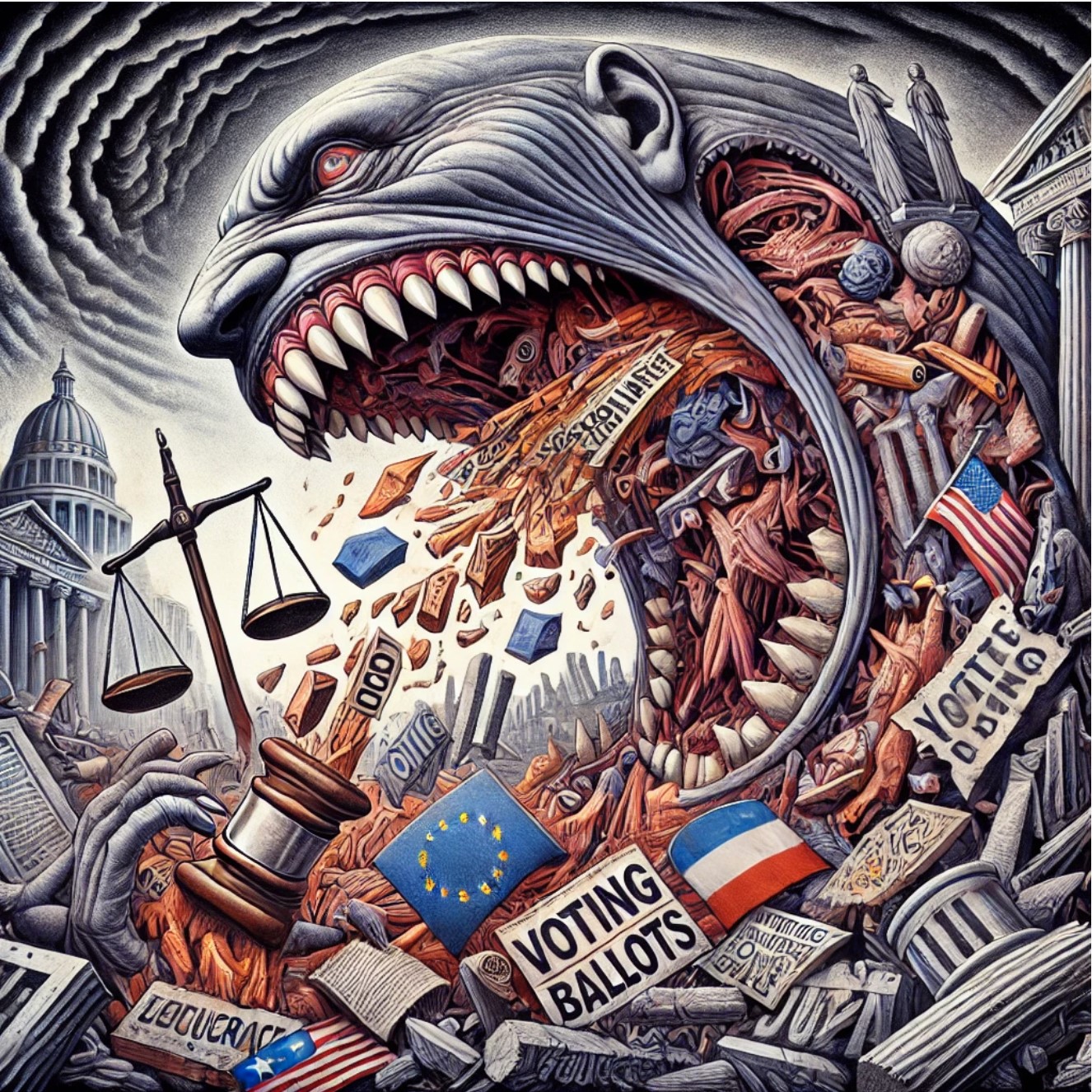
Don’t Fall for Lazy Profits
Competition moves the world.
It also improves it.
More than any single factor, the innate drive to compete explains humanity’s rise from cave-dwelling flint finders to privately funded space walks 870 miles out in space.
We compete to add value to our lives. And those among us who add the most value do so by adding value for others.
Competition also drives corporate profits.
Sure, executive teams can cut corners, cheat, scam, and lie their way to bonuses, beach houses, and boats.
Some even get away with it.
However, companies don’t generate profits for long when customers don’t come back or shareholders abandon them.
And they don’t come back when they don’t receive value.
Because competition moves the world, profits, too, must be competitive to add value and create shareholder wealth.
But it’s not straightforward to measure competitive profits.
You won’t find them looking at earnings per share on traditional financial statements.
You first have to know the cost to compete.
Get Off the Couch

Public companies report quarterly financial statements according to specific standards.
They call them GAAP, for Generally Accepted Accounting Principles, which evolved to help determine whether or not a company is a “going concern.”
In other words, it can cover expenses and pay its debts.
There’s a lot you can tell from the numbers in these statements. However, the most important numbers are earnings per share (EPS) and its equivalent net income. (NI)
EPS and NI tell investors that a company made more money than it spent– NI tells you the total profit, and EPS tells you the profit per share.
But making more than it spends is the bare minimum to expect from a company.
Say you invest in Oracle (NASDAQ: ORCL) at $162 per share. Last quarter, they earned $1.03 per share.
Ok, the EPS was positive. The company earned a profit. However, the EPS tells you little about how well another company could have performed with your capital.
And Capital—that’s what all this competing is about.
Money gets invested into capital. The best return on capital ultimately makes for the best investment.
Always remember that.
You’re on The Capital List for God’s sake! 😉
Anywho…
To compare Oracle to its competition, you first need an idea of how the average company would have performed with your capital.
But EPS doesn’t answer, “Had I invested in the average company instead of Oracle, would I have made more money?”
Turns out, accounting profits are lazy.
The Cost to Compete
You, the investor, want to know what Oracle’s competition can do with your investment.
And that competition is, ultimately, the average company. Which is just another way of saying the entire market.
But you need a way to figure out what your return in that average company would be.
Economists call this average return the opportunity cost of capital.
Your investment is your capital. When you commit your capital to one company, you do so at the expense of other opportunities.
The competitive return is that opportunity cost.
It goes by many names—Return on Invested Capital (ROIC), Return on Capital (ROC), and Weighted Average Cost of Capital (WACC), to name a few.
But it’s essentially the cost of competing because companies that can’t clear that cost do a poor job competing for investor’s capital.
At the end of the day, lazy profits don’t account for the cost to compete. Competitive profits do.
To stick with Oracle as an example, here’s what determines its cost to compete.
Breaking Down the Competition

The S&P 500 IS the average company. Those 500 stocks comprise 80% of the U.S. stock market’s value.
To calculate the competitive cost for Oracle, you begin with the S&P’s expected return.
(You can treat stocks like bonds to calculate a yield. And the yield for anything is its expected return).
For the S&P, that return is currently 8.5%.
Next, you adjust the S&P expected return for Oracle’s specific business risk. Riskier companies should have a higher expected return and, thus, a higher cost to compete. Lower-risk companies have lower costs.
Making those adjustments, Oracle’s business risk is roughly 1.4 times that of the average company. Bringing its cost up to 10.5%.
But we’re not quite done.
You also make adjustments for the company’s debt. Debt is cheaper than equity–up to a point. So, adjusting for debt can lower a company’s competitive cost.
In Oracle’s case, it helps.
When all is said and done, Oracle’s cost to compete equals 7.8%.
To convert that cost to dollars — to calculate its actual competitive cost– you multiply the total capital Oracle invested in its business.
(as an investor, you ultimately own a share of a company’s capital)
Now, GAAP accounting gets capital wrong, too. It’s GAAP’s Original Sin. I talk a little about why here.
This means you can’t trust the company’s capital numbers from the financial statements—at least not directly. Plus, getting capital wrong creates another reason why EPS can’t trusted.
But I’ll pass by the how and why of that Original Sin for now. We’ll go down that trail another day.
Just trust me that the amount of capital Oracle has invested in its business as of Friday, August 30, 2024 adds up to $99.878 billion.
Multiply that capital number by Oracle’s cost to compete, and you get a competitive dollar cost for Oracle equal to $7.79 billion. Or Oracle’s minimum required profit.
Unfortunately, you can’t just compare the required profit to net income or divide it by outstanding shares and compare it to EPS.
Remember, GAAP’s Original Sin. EPS aren’t just Lazy Profits. Turns out they’re dumb, too.
For now, just remember, don’t invest your capital in a company that can’t compete.
Don’t Leave Me Hanging

After all this (and I appreciate you sticking with me!), I’m sure you want to know if Oracle can compete.
So, here we go.
Oracle’s current profits (calculated the right way) were $13.85 billion.
Deduct Oracle’s competitive cost of $7.79 billion, and you’ll see that Oracle made $6.06 billion in competitive profits over the last 12 months.
| Cost to Compete | 7.8% |
| x Capital | $99.878 billion |
| = Competitive Cost | $7.79 billion |
| Profit (done the right way) | $13.85 billion |
| Competitive Profit | $6.06 billion |
Looks like Oracle can compete.
That competitive profit tells you how much value Oracle created for others, specifically its shareholders, over the last year.
And as a value-adding competitor in the market arena for capital, Oracle helped move the world.
Think Free. Be Free.
Don Yocham, CFA
Managing Editor of The Capital List
Related ARTICLES:

American Exceptionalism, v2.0
By Don Yocham
Posted: February 12, 2025

The Holy Trinity of Growth
By Don Yocham
Posted: February 7, 2025
The War for the American Way
By Don Yocham
Posted: February 7, 2025

Draining the Moat
By Don Yocham
Posted: February 2, 2025

Deep-Sixed AI Dreams
By Don Yocham
Posted: January 28, 2025

From FUD to Oil and Gas Clarity
By Don Yocham
Posted: January 25, 2025

Waking Up to the “Drill Baby, Drill” Dream
By Don Yocham
Posted: January 22, 2025

This Ain’t Your Mother’s Internet Bubble
By Don Yocham
Posted: January 21, 2025

Tariff Winners and Losers
By Don Yocham
Posted: January 17, 2025

The Odds Favor Growth
By Don Yocham
Posted: January 14, 2025
FREE Newsletters:
"*" indicates required fields




